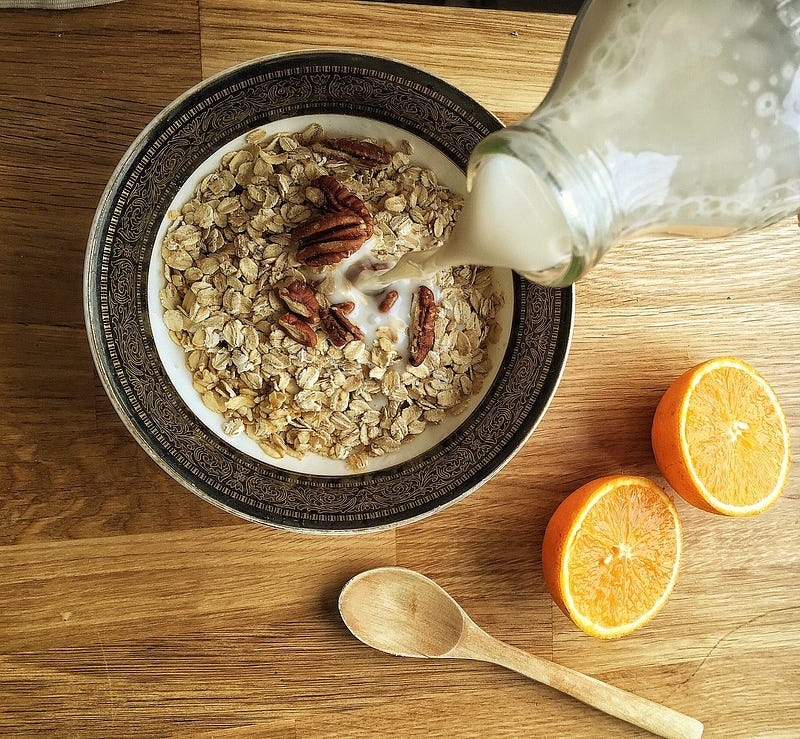The Revolutionary Science and Marketing of Oat Milk
Written on
Chapter 1: A Personal Encounter with Oat Milk
It was December 2017 when I first encountered oat milk during a stroll down a Santa Monica boulevard. On that warm evening, I entered a trendy coffee shop where I typically ordered my coffee with soy milk.
“Sorry, we don’t have soy milk,” the barista replied amidst the sounds of the espresso machine. “But we’ve just started offering a new dairy-free option called oat milk. Want to give it a try?”
Without hesitation, I accepted. Oat milk piqued my curiosity and felt reassuringly familiar. After all, baristas tend to know their stuff!
This experience perfectly illustrates the organic marketing strategy envisioned by Oatly’s creative team: a millennial walks into a coffee shop, a hipster barista introduces oat milk, and voila—more customers are hooked.
Oatly's marketing strategy has been extraordinarily effective. By charming baristas to use oat milk, which in turn attracts customers, Oatly achieved net sales exceeding $110 million in 2018, with forecasts predicting a doubling in 2019.
The Science Behind Oat Milk
Swedish scientist Rickard Oste pioneered oat milk in the early 1990s while researching lactose intolerance. He aimed to produce an environmentally friendly beverage devoid of lactose, resulting in a creamy product enriched with natural sweetness from oats.
Compared to soy, almond, or rice milk, oat milk naturally has a higher starch content, while dairy milk contains none. Enzymes added to the oat milk facilitate the breakdown of starch into sweet, nutty sugar molecules, giving oat milk its distinctive flavor.
Oat milk has become a “barista favorite,” a crucial selling point in Oatly's campaign to convince coffee shops to stock their product. Its balanced protein and fat content create the perfect creamy foam for lattes, cappuccinos, and other specialty coffees.
This aligns with Oste's original vision by minimizing environmental impact. Oat milk significantly reduces greenhouse gas emissions and water usage compared to dairy farming. To illustrate, producing one liter of dairy milk requires approximately 1,000 liters of water, while oat milk only needs about 48 liters.

The Nutritional Profile of Oat Milk
While drinking a cup of oat milk doesn’t equate to eating a bowl of oats, it still offers notable health benefits, making it comparable to other milk alternatives.
Oat milk may help reduce LDL cholesterol levels due to its content of beta-glucan, a soluble fiber known to lower cholesterol. Research indicates that a diet supplemented with around 3 grams of beta-glucan can reduce LDL cholesterol by 5–7%.
A cup of oat milk contains about 1.3 grams of beta-glucan, while a bowl of oats has closer to 3 grams. Thus, oat milk can help you increase your beta-glucan intake without requiring excessive oat consumption.
Another advantage is that oat milk is lower in sugar and lactose-free. Many non-dairy milks often receive criticism for their sugar content, but it’s essential to recognize that dairy milk contains substantial natural sugars, mainly lactose. For instance, a cup of 1% dairy milk has 12–13 grams of sugar, whereas unsweetened oat milk has only 6 grams.
This is especially beneficial for lactose-intolerant individuals, as nearly half of North American adults experience some level of lactose intolerance.
Oat milk does have less protein, containing 4 grams per cup compared to 8 grams in cow's milk. However, it surpasses other non-dairy options, except for soy milk, which matches cow's milk in protein content. It's crucial to note that oat milk should not replace soy or cow's milk as a primary protein source, especially for children and infants.
Commercial oat milk is often fortified with calcium, vitamin D, and B12 to align with dairy milk's nutritional profile. Typically, one cup of oat milk provides 30-50% of the daily value for these nutrients. However, fortification is not always mandatory, so it’s vital to check nutrition labels and shake the carton before pouring, as nutrients can settle.
Homemade oat milk generally lacks added vitamins and minerals, so those preparing it at home should ensure they're obtaining these nutrients from other sources.
The Bottom Line
Oat milk represents a remarkable advancement in the food industry, bolstered by a strong marketing strategy. With its delightful taste, potential health benefits, and exceptional performance in coffee applications, oat milk and Oatly have redefined dairy-free alternatives.
Understanding the benefits of oat milk enables us to be more informed consumers. While enjoying oat milk ice cream, we must remember that we’re consuming oat milk, not a bowl of oatmeal.
Nonetheless, I will continue to savor my coffee with a splash of oat milk—not solely for its potential health advantages but also because it’s incredibly delicious and dairy-free.
Kristen is a dietetics student and Laura is a food science and nutrition student. Beet Science aims to provide engaging and informative evidence-based nutrition and food science articles about everyday foods.
Chapter 2: Exploring the Truths and Myths of Oat Milk
The first video titled "The Untold Truth Of Oat Milk" offers an in-depth look at the hidden aspects and realities of oat milk that many may not be aware of.
The second video titled "Oat Milk Nonsense" critiques some common misconceptions surrounding oat milk, shedding light on the facts versus myths.